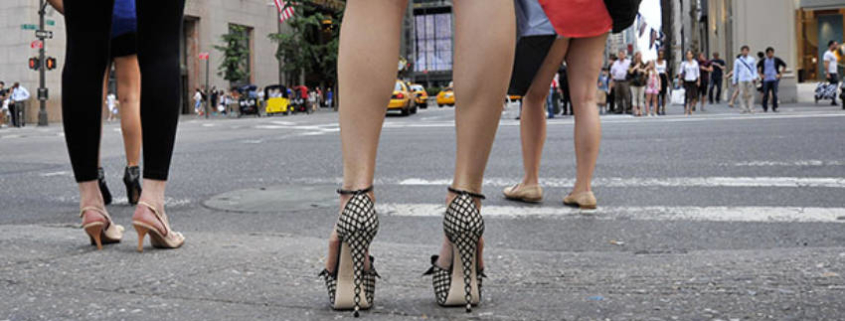High Heels and Chronic Pain
“When your feet hurt, you hurt all over.” Socrates
Women complain of the pain from high heels regularly. However in many situations, high heels are considered a must-wear item. Wearing high heels is your choice, but you or your work (Some workplaces require women to wear high heels) should at least be aware of the problems related to high heels. If you frequently wear high heels, you are setting yourself up for long-term issues.
High heels alter alignment of the feet, legs, and back, and can have long-term effects on posture and health which may influence unnatural posture, changed position of the spine can put pressure on the nerves and cause back/ neck pain and sciatica, balance impairment, headaches, early fatigue and a feeling of heaviness in the legs, muscle overuse and repetitive strain injuries, osteoarthritis of knees and ankles, reduce calf pump efficiency and may influence deep vein thrombosis, shortening of the Achilles tendon and calf, Achilles tendonitis and calf strains, ankle sprains, plantar fasciitis, foot deformities, hammertoes, bunions, Morton’s neuroma (thickened nerve) and corns.
The mid-foot, heel, ankle, knee, hip, mid-back, upper back can all become painful as a result of wearing high heels and even headaches can arise. If the mobility of the feet and ankles are compromised then the joints of the lower limb, pelvis and spine will also be compromised.
If the joints of your feet don’t work properly because of the strain of wearing high heels, the connecting tissues are forced to compensate. This gives rise to increased muscle tension and muscle imbalance resulting in pain due to these compensatory changes.
The unnatural position of the foot in high heels means it’s less able to act as a shock absorber and the knees have to bend more to absorb the increased force. This increased stress on the knees, and overloading of the knee joints, increases the risk of joint degeneration and arthritis.
As the normal curves of the spine are altered by high-heeled shoes and the body is bent forward, more energy and muscle activity is required to maintain balance. This additional strain on the back can lead to overload of the spine.
When you wear high heels, the distribution of your body weight changes. At first, the body can again adopt its natural position after the heels are removed. However, over time, the unhealthy patterns can persist even when you take the shoes off.
If you’ve been wearing heels for years, you’ve probably already experienced some of their negative effects. Osteopathic care can certainly help to address some of the detrimental spinal effects of wearing high heels, but, if you really want to make a difference, then the rest is up to you.
Osteopaths place great emphasis on giving both postural and ergonomic advice as part of the osteopathic treatment. Osteopaths can aid you in rehabilitating your muscles and the stress they have induced on the musculoskeletal structure of the body because of high heels.
View a list of common complains that Osteopathy can assist with
Discovery the benefits of Osteopathy
- What is Osteopathy?
- Adult health issues
- Babies and Children
- During and after pregnancy
- Common Complaints
- Testimonials
- Sports Injuries
- Genral Osteopathy FAQs
- The Science & Reasearch



